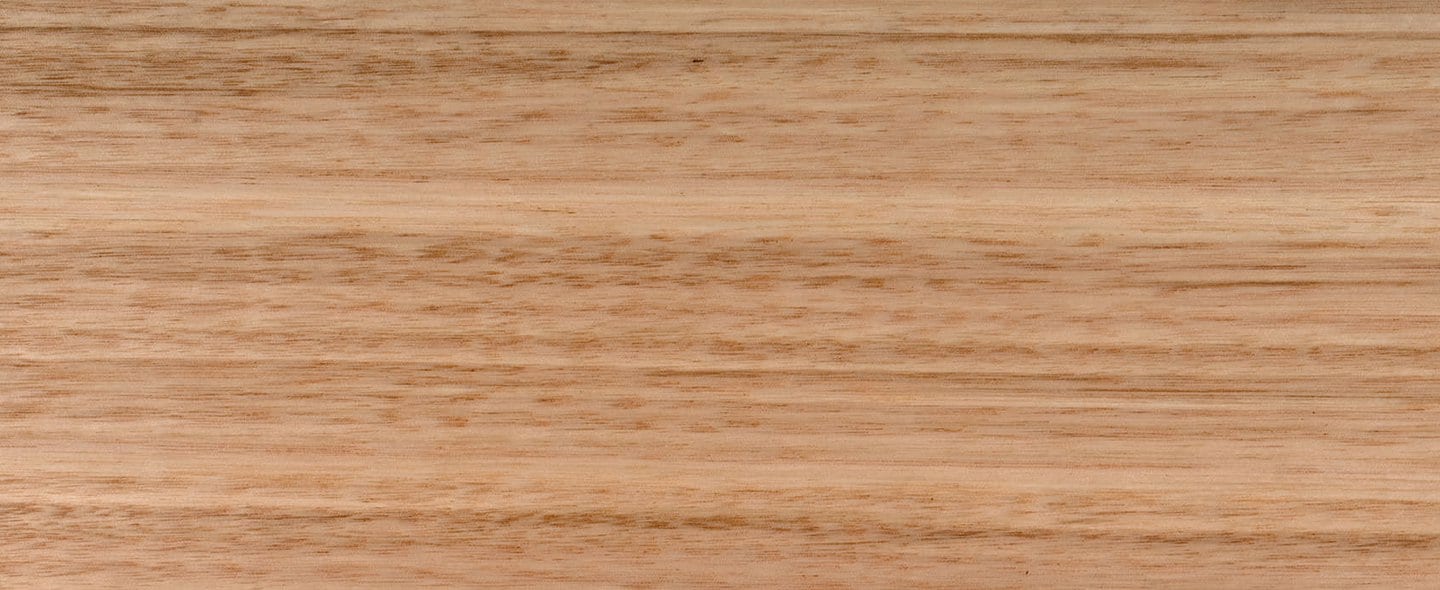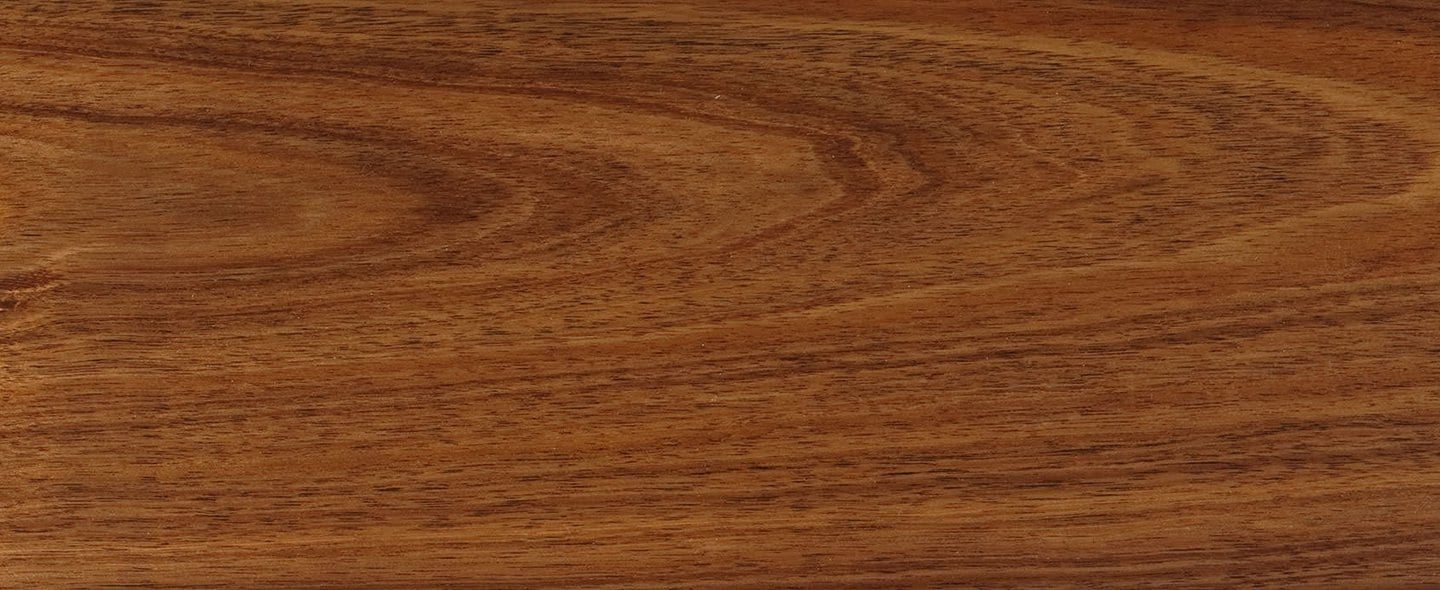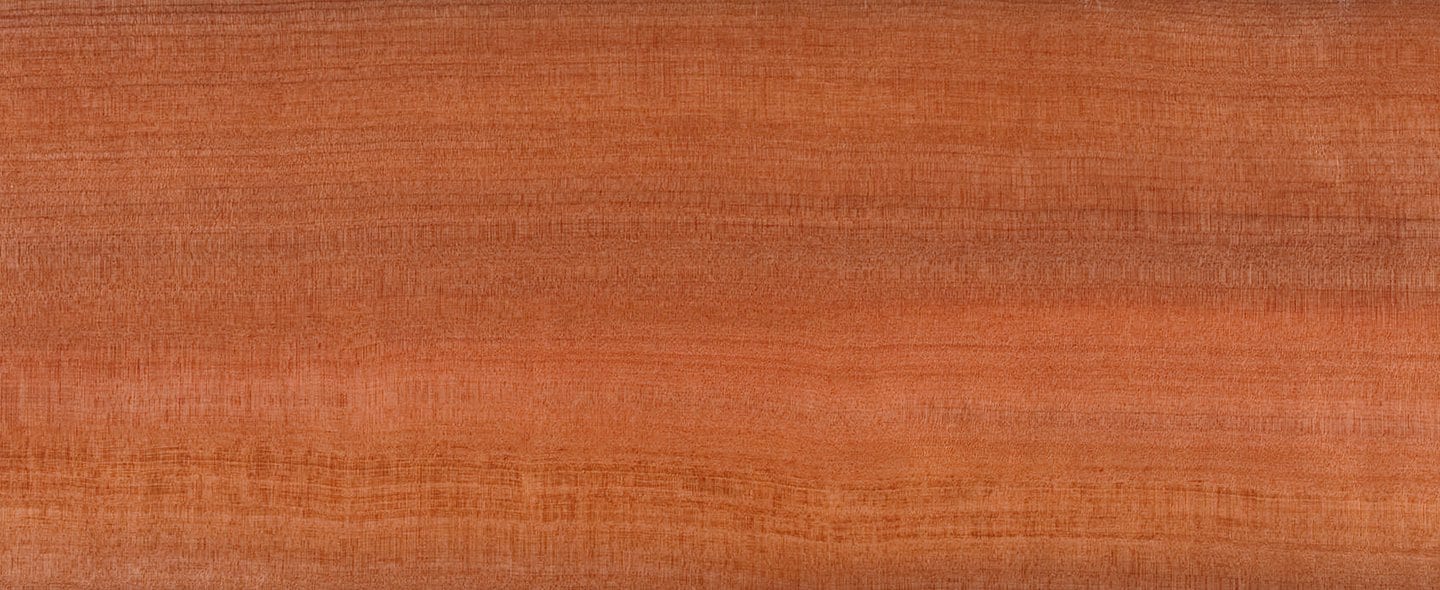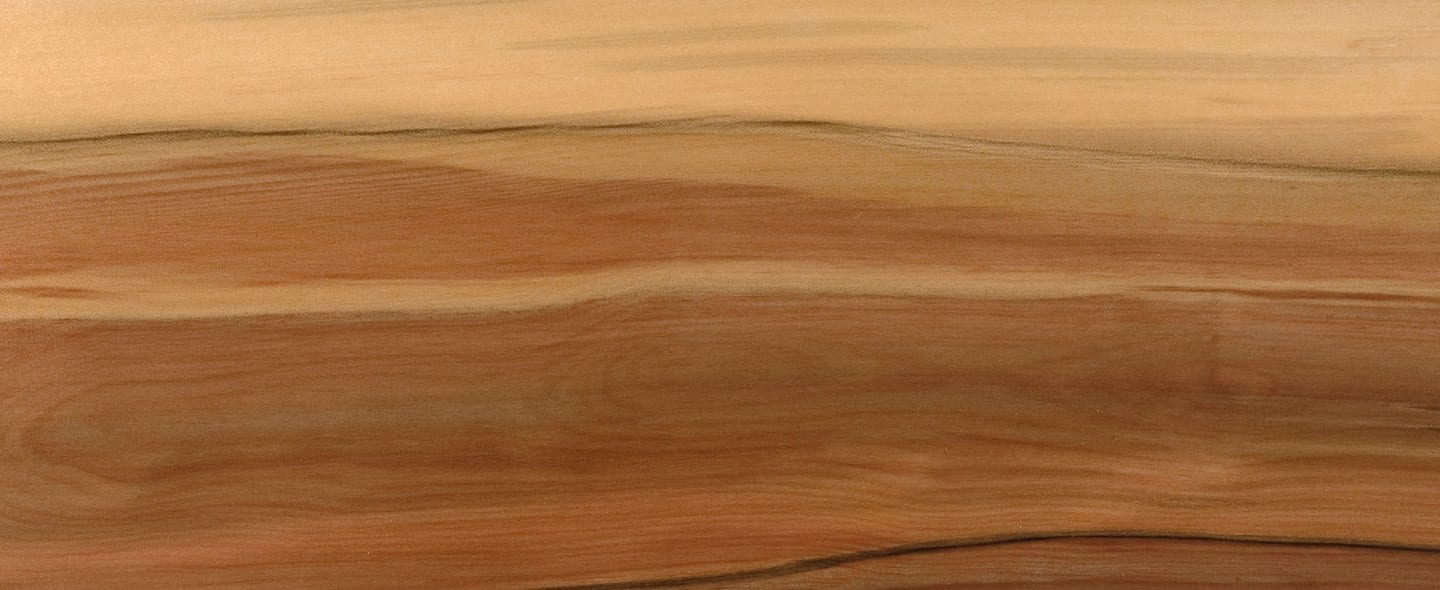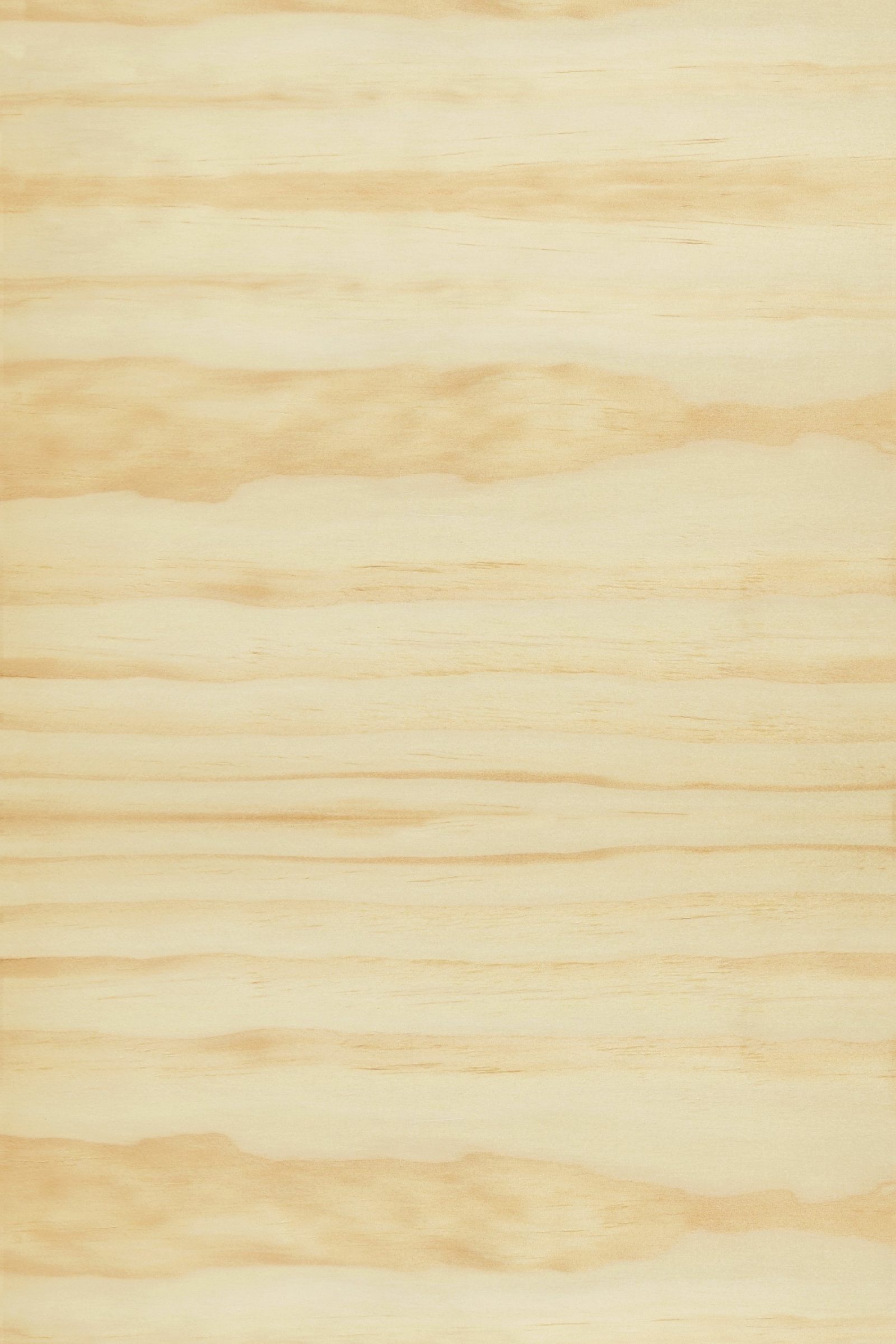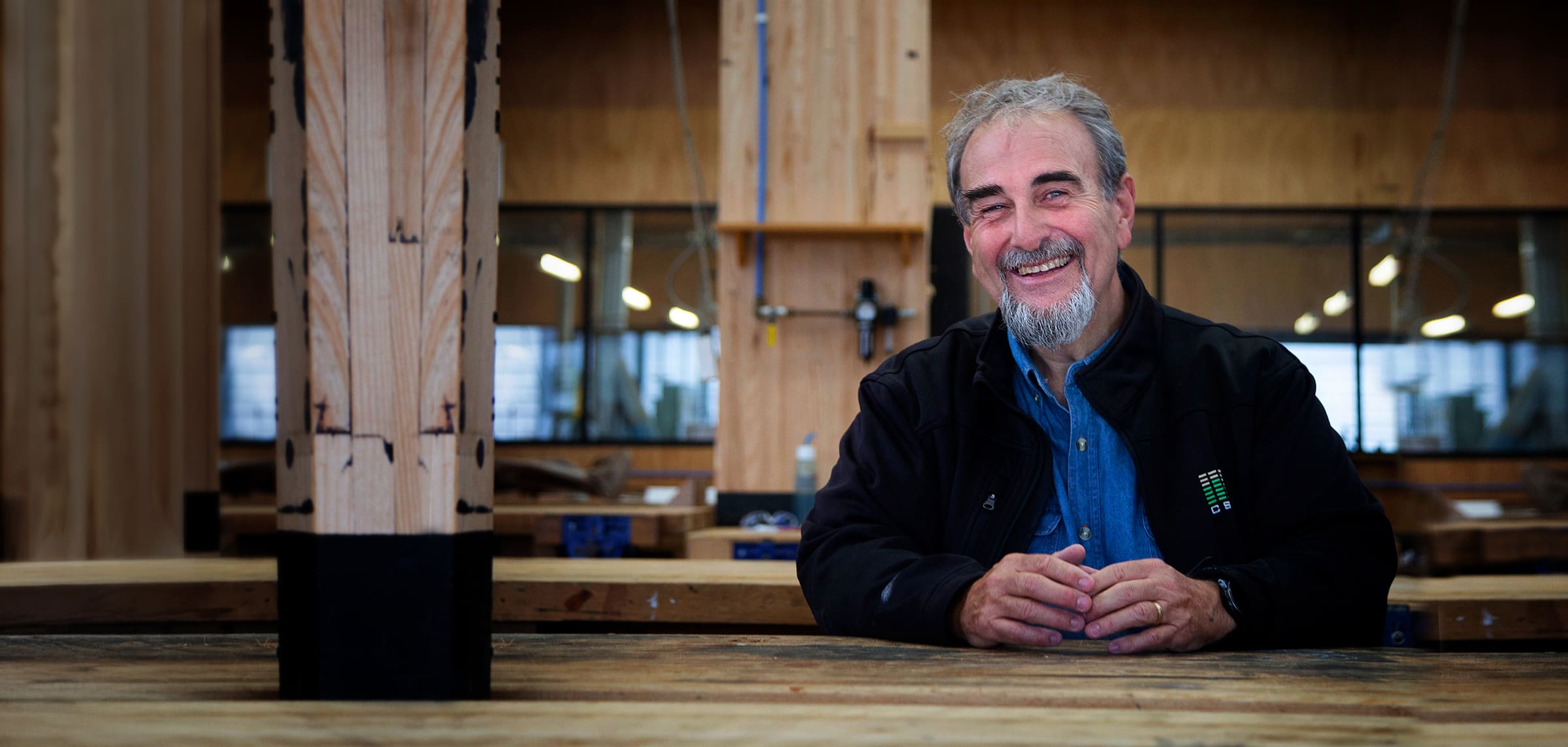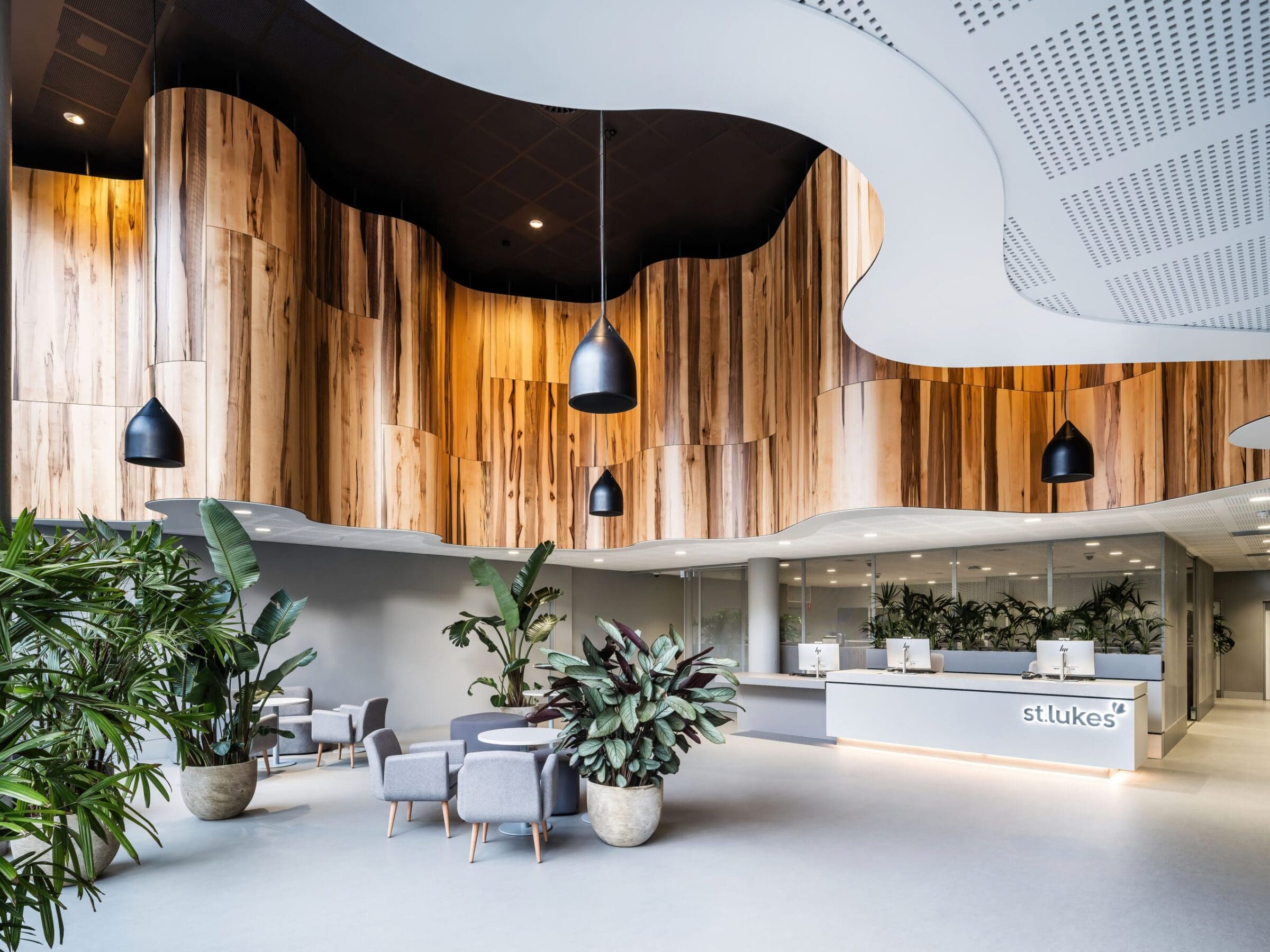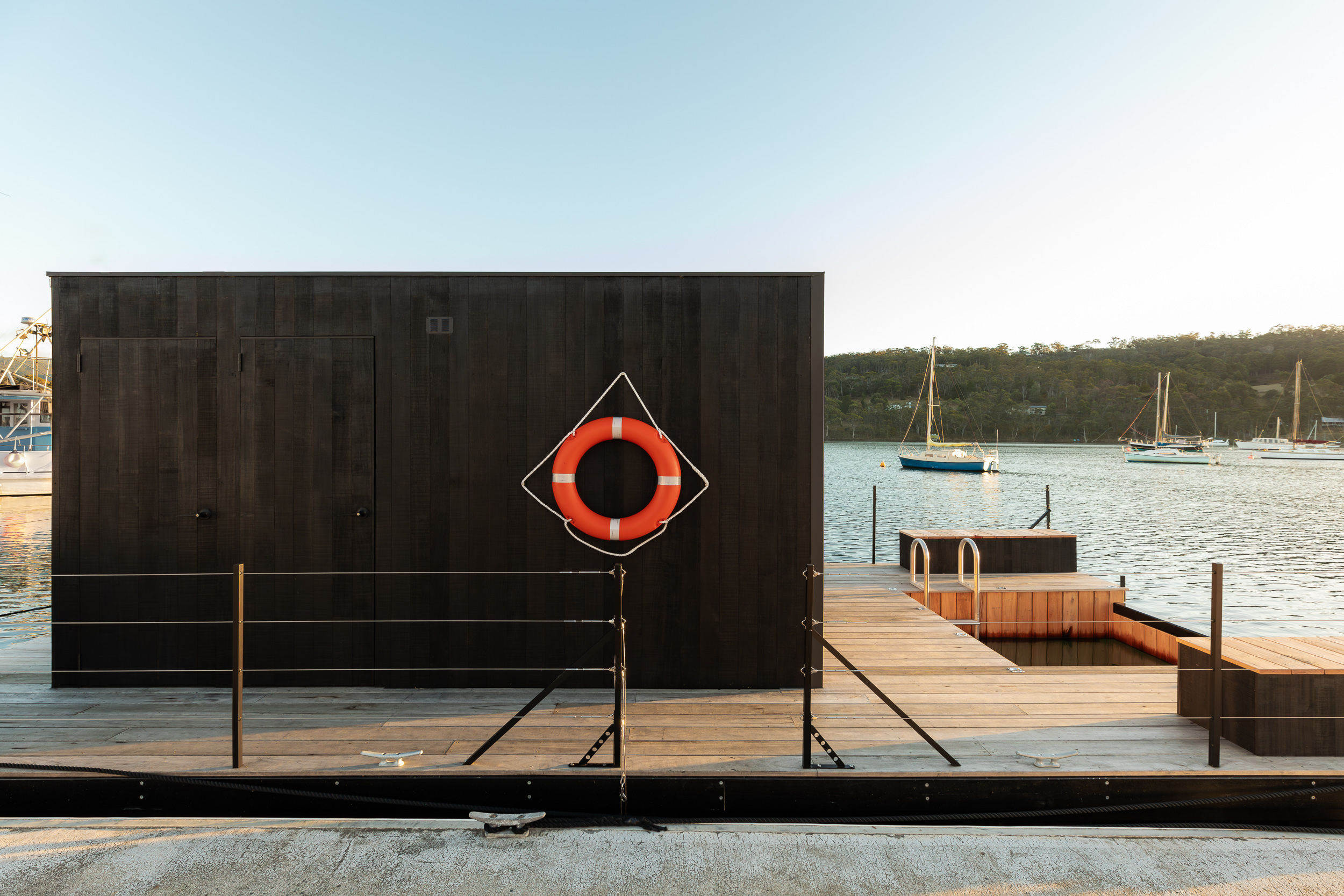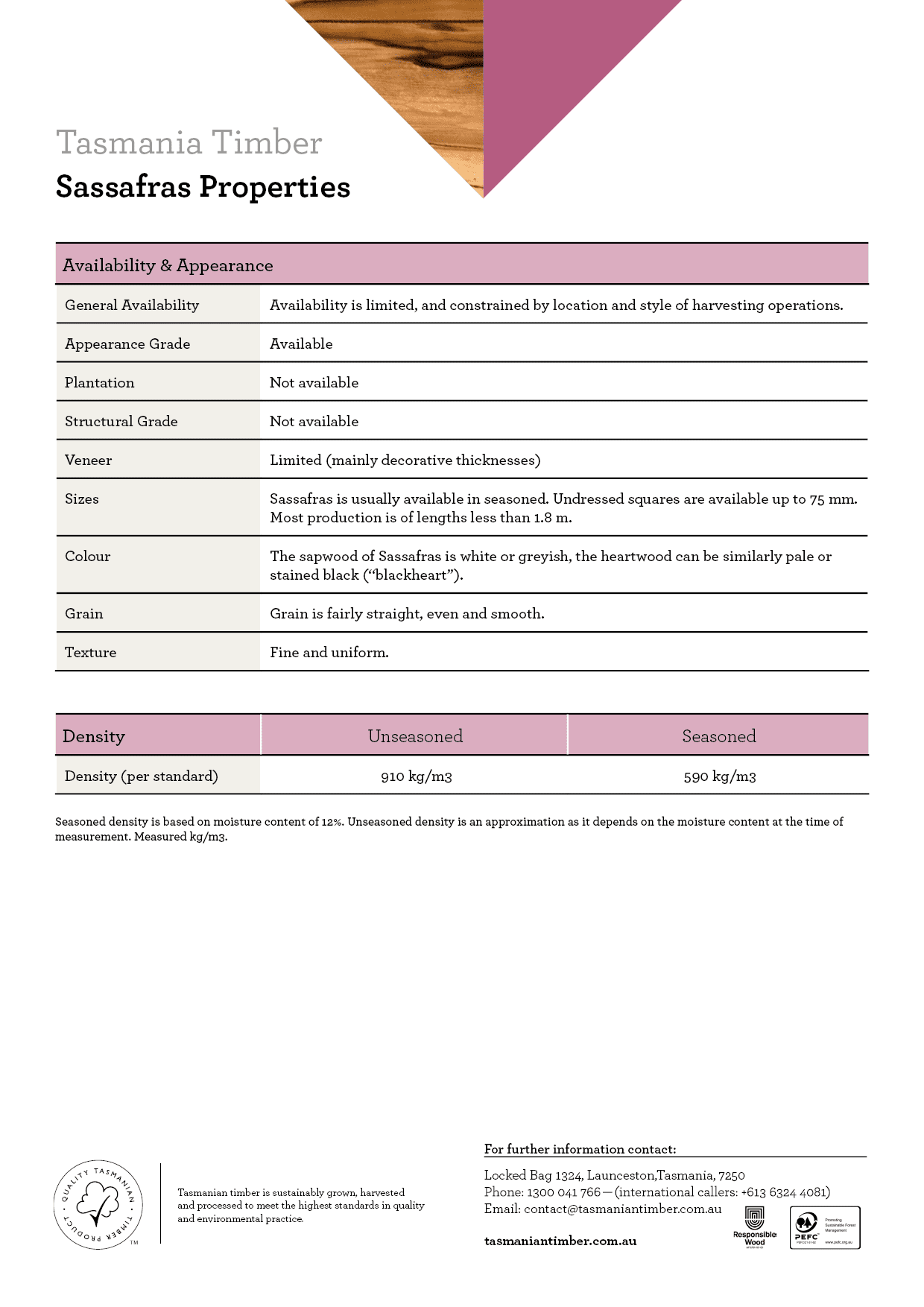Sassafras
Available in two major groupings - Golden and Blackheart - makes an attractive veneer or laminated board, as a solid with knots and figure for furniture, panelling and moulding. Blackheart is prized for decorative work and turning.
Of all Tasmanian timbers, sassafras has the most variable and dynamic colouring. It is a beautiful and pale creamy grey to white normally but can be streaked with rich browns and black heart. So, it is available in two major groupings; Golden sassafras and Blackheart sassafras.
Finishing to a grey and golden tone, golden sassafras is particularly attractive as a veneer or as a solid timber with knots providing figure. If the tree is infected with a staining fungus it produces Blackheart sassafras. Blackheart is a timber with distinctive dark brown, black, and even green streaks running through the wood. Blackheart is highly prized for decorative work and bowl turning as no two pieces are ever the same.
Sassafras is versatile. While the wood is light and strong, it is rather soft and easily worked. Renowned in furniture use as a solid, a veneer, or as a laminated board, sassafras is used for panelling, mouldings, joinery, veneers, cabinet making and turnery.


